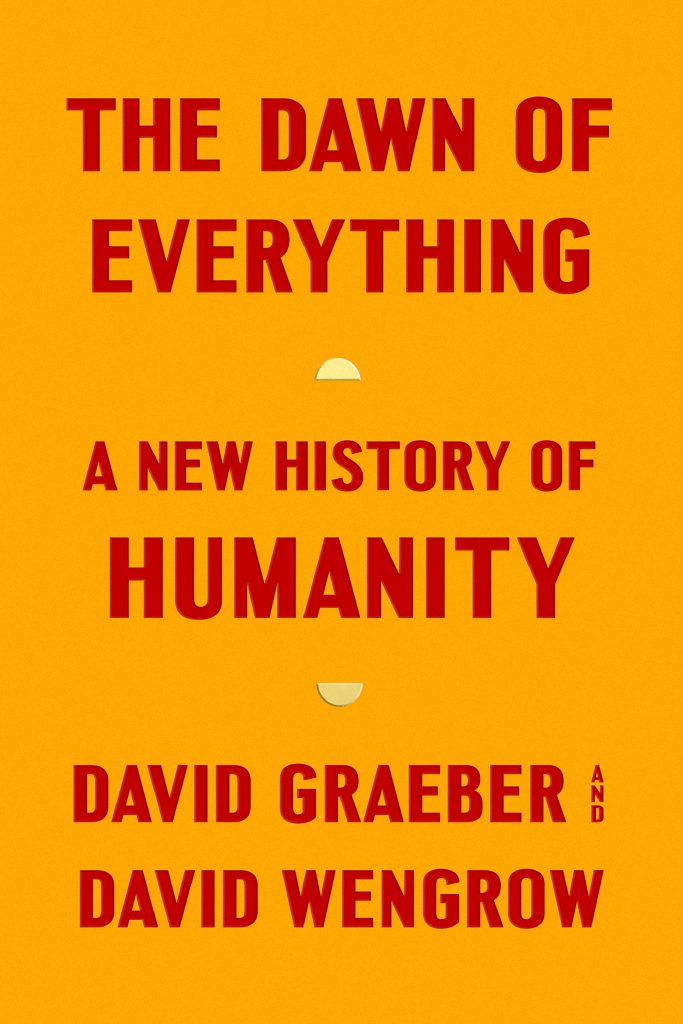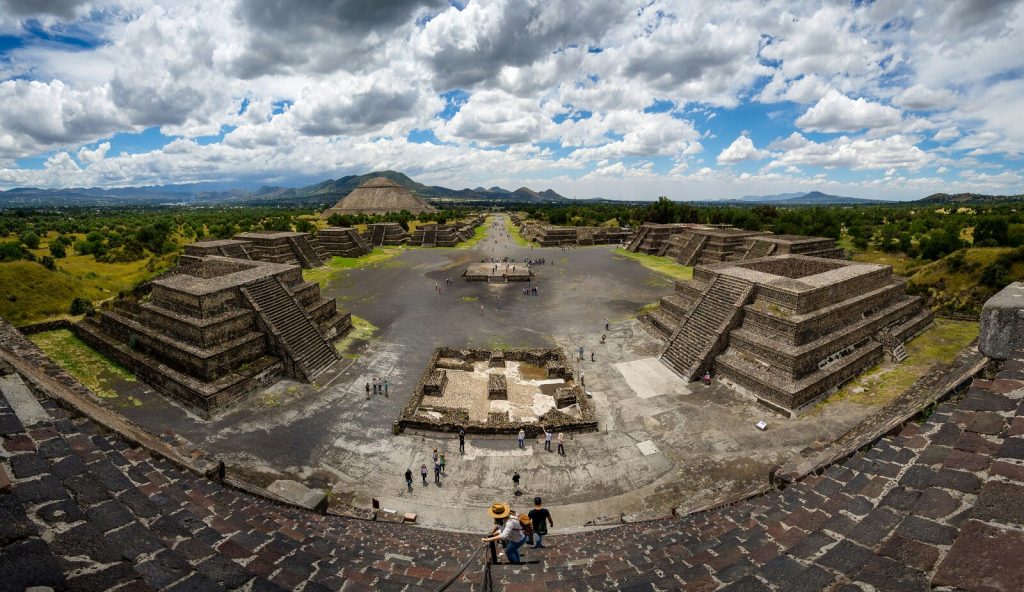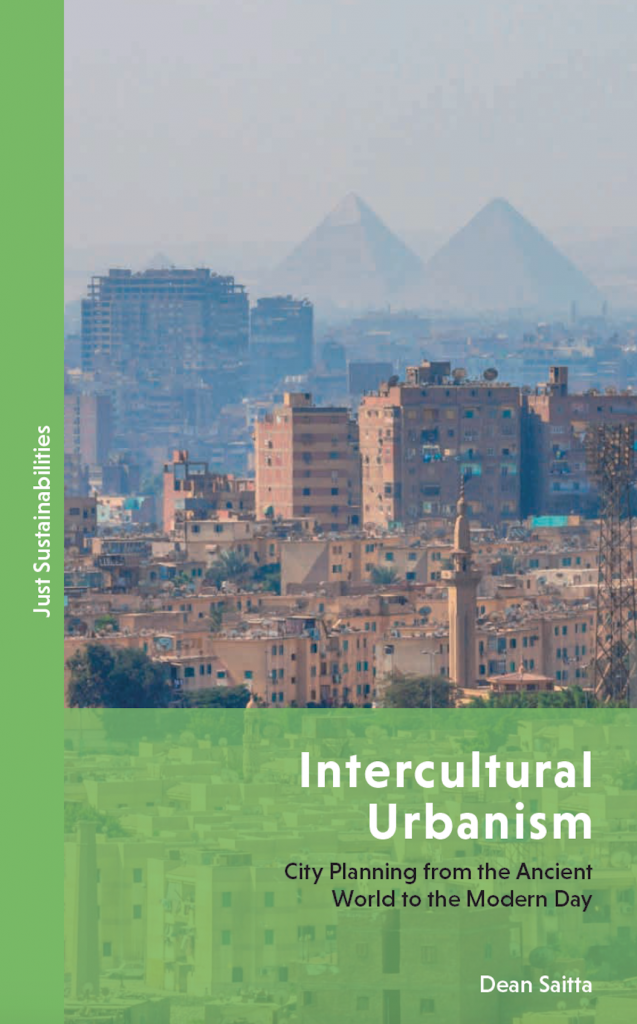Deep History, Ancient Wisdom, and Modern Planning
Deep history—defined here as the entirety of Homo sapiens’ 300,000+ years of existence on the planet—is a favorite subject for best-selling authors and wannabes worldwide. A new book by David Graeber and David Wengrow, The Dawn of Everything: A New History of Humanity, uses accumulating archaeological and anthropological evidence to challenge the prevailing “Conventional Narrative” of human social evolution that’s often presented in Big History books. This narrative packages societies into a linear, stage-sequence series of societal forms defined by closely associated sets of characteristics. In this view cities correlate with intensive agriculture, state-level organization, monumental architecture, political domination, and class stratification. The history of cities is presented as teleological, goal-oriented, and progressive. This Origin Story appeals to us because it is widely repeated and has become so comfortingly familiar. For Graeber and Wengrow the Conventional Narrative is not only wrong but also “needlessly dull.”

Alternatively, Graeber and Wengrow argue that Deep History is much more nuanced and complicated. They offer a well-developed counter-narrative using evidence from all over the globe. Available archaeological data suggest that the last 10,000 years of human experience has been marked by intense experimentation with social arrangements that defy easy characterization. For example, current evidence indicates that monumental architecture was created very early on by mobile hunting and gathering peoples organized non-hierarchically. Village agriculturalists gathered in dense aggregations, made serious material investments in place, and then scattered to the winds. Permanent cities with complex industrial economies were planned and governed collectively, with astonishingly low levels of socioeconomic inequality. In other words, the archaeological record demonstrates that human history is more teleonomic than teleologic: people make it up as they go along and, in most instances, they find a way.
Graeber and Wengrow argue that this long record of human experience should open our eyes to different social arrangements for getting things done, including myriad possibilities for egalitarian ways of being and doing. The first step is to recognize that the Conventional Narrative is a contingent, face-saving construction of the Enlightenment; i.e., a by-product of Europeans confronting a Native American “Indigenous Critique” that called out Western society’s competitive, oppressive, and violent nature. A second step is to treat ancient people as self-conscious, creative political actors and not “playthings of some inexorable law of history.” A third step is to pay more attention to the ancient world’s expressions of material and organizational variation: the archaeological oddities, singularities, and hybridities that are often left out of the Conventional Narrative.
Graeber and Wengrow’s book is being widely praised for its ambition and audacity. It’s also receiving some justifiable criticism. Interpretation in archeology is rarely straightforward. The meaning of many archaeological patterns is often ambiguous and, on many issues, the jury is still out. Graeber and Wengrow admit as much. However, in my view they carry on a bit toomuch about the discipline’s perceived limitations. Archaeology is a historical science that’s a lot like other historical sciences. Most claims have a grounding in solid empirical work and well-tested anthropological theory. Other claims are clearly speculative but greater certainty will come as theory and method evolve. Even if Graeber and Wengrow are wrong in some of their inferences (e.g., about the frequency of “egalitarian cities” in human history), their claim about more organizational variation existing in the ancient world than can be safely accommodated by the Conventional Narrative is very well substantiated. In this regard Graeber and Wengrow usefully ask why some findings are elevated to paradigmatic status within world-historical narratives while other findings are written off as weird anomalies. Perhaps the book’s greatest contribution is moving archeological knowledge out of scholarly journals and into the public domain where it can be discussed by educators, policy-makers, and planners.
Graeber and Wengrow’s message resonates with me because for several years I’ve been using this blog to critique the Conventional Narrative and promote an alternative view of urbanization in the ancient world. Readers have already been introduced to some of the case material that’s used by Graeber and Wengrow in their sweeping account of human history. This includes the dense Anatolian settlement of Çatalhöyük, arguably the birthplace of the urban creative class. There’s the Mesoamerican metropolis of Teotihuacan, now a poster child for theories of urban collective governance and egalitarianism. There’s North America’s great indigenous city of Cahokia, a magnet for social diversities that were integrated by a common civic identity. I’ve added other examples to this mix: the Mayan world’s proto-New Urbanist city of Chunchucmil, and the East African cosmopolis of Songo Mnara.

I’ve recently synthesized the highlights of this deep history—and their implications for city building today—in my own book, Intercultural Urbanism: City Planning from the Ancient World to the Modern Day. My book is a much more modest rendering of Graeber and Wengrow’s chapter on “Imaginary Cities.” It does, however, partly fill what they identify as a significant void in the literature: books about early cities that lacked top-down structures of governance. Central to both texts is the use of archaeological material to produce new imaginaries: alternative cognitive images of the city to come. In my case, I use the work of an author familiar to many urban scholars and planners—Richard Sennett’s discussion of “open city” design forms as elaborated in his Building and Dwelling: Ethics for the City—to serve as a bridge between present and past. Sennett advocates several strategies for producing the open, inclusive city: designing synchronous centers, working with porous edges, punctuating space to add character, building with incomplete forms, and embracing “seed” planning rather than master planning. I argue that the ancients used all of Sennett’s forms and strategies in their city building endeavors. They were creating early versions of eco-cities, garden cities, creative cities, and intercultural cities well before any of these became models for urban regeneration in the United States and beyond. The ancients coped (often collectively) with many of the pressing planning and governance issues of our time: accommodating ethnic diversity, maximizing participatory governance, building sustainably. The key question is what’s to be discovered in the way of newdesign principles, forms, and strategies that can serve these causes? There are conceivably many, once we abandon the Conventional Narrative and focus on the anomalies (the singular and the strange) that are excluded because they don’t easily fit.

Graeber and Wengrow’s book offers an important take-down of the Conventional Narrative as it concerns the history of cities. Other scholars have done this; e.g., Justin Jennings’s Killing Civilization: A Reassessment of Early Urbanism and its Consequences. But instead of killing civilization, Graeber and Wengrow seek to retrieve the term’s original meaning, which refers to “qualities of political wisdom and mutual aid that permit societies to organize themselves through voluntary coalition.” In so doing, Graeber and Wengrow point the way to a more comprehensive approach to theory-building about the city. This is important because of the growing influence of a scientific approach in urban theory that, while having some clear virtues, often avoids the singularities and hybridities that make the past a potential source of new ideas for moving forward. Scientific urbanologists seek general knowledge of the city that can have trans-historical predictive value. They desire well-founded, quantitative laws of urban development good for all times and places. They pay virtually no attention to the civic experiments that focus Graeber and Wengrow’s study. Scientific urbanologists certainly understand that the enormous creativity of cities—their status as “social reactors”—derives from spontaneous and serendipitous interactions between human beings. However, they still seem to assume that the urban built environment is little more than a passive container for these interactions rather than an active determinant of their quality. If we assume that what and how we build matters, then urban planning and placemaking is better served by attending to the specifics of culture, history, and design rather than to general laws of urban development. We can benefit from “thick descriptions” of the past as well as studies that distill universal covering laws. There surely is room for both the scientific and the humanistic, the nomothetic and the ideographic, the quantitative and qualitative in any theory of urban form that aims to have contemporary utility.
All things considered, Graeber and Wengrow make a significant contribution to this comparative and integrative project. The story they tell is certainly more interesting and hopeful than every other world-historical narrative that has appeared on best-seller lists. Whether their account will be helpful to urban scholars, policy-makers, and planners is an open question. As mentioned many times on this blog, the point of investigating the ancient city is not to find ready-made models that can be transferred wholesale to today. The point is to identify planning principles, forms, and strategies, and accompanying governance structures, that can help achieve desired outcomes. Deep historians must better translate their findings into terms and forms that are relevant to contemporary policy-makers and planners. Skeptics need to suspend their disbelief that the past matters; e.g., that scale differences between past and present are too huge to prevent any meaningful transference of knowledge. Everyone needs to break with convention and the “teleological habit of thought” that reduces the past to an embryonic version of the present. As Graeber and Wengrow note throughout their text, this impoverishes our sense of possibility. It also blinds us to concrete lessons that the past has to teach.
Leave a Reply